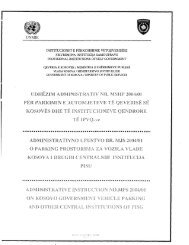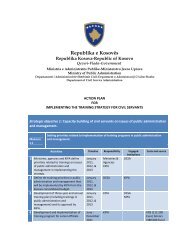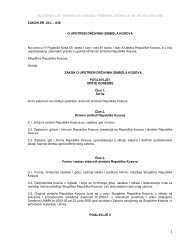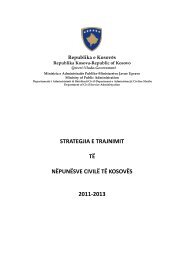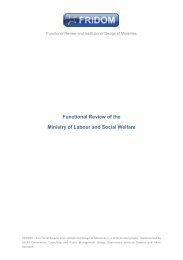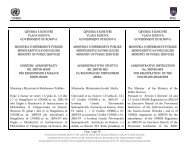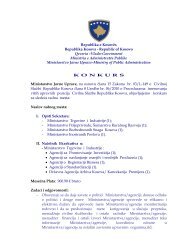Download
Download
Download
Create successful ePaper yourself
Turn your PDF publications into a flip-book with our unique Google optimized e-Paper software.
igidities in the budget that prevent the efficient use of resources; the roles of the MOF<br />
vs MOH in deciding on what policies and services to finance; and arrangements for<br />
returning revenue to the entities earning it. Suggestions are made in Appendix G to<br />
improve current arrangements, including strengthening the analysis of the share of the<br />
budget received by the MOH and promoting the health sector as an early pilot for some<br />
elements of performance based budgeting, which can support a case for increased<br />
flexibility in the use of resources, if certain conditions are met.<br />
Linking planning (Health Strategy) to budgeting (medium term expenditure<br />
framework and annual budget), MOH strategic and operating plans, annual plans<br />
of hospitals and others, reporting and monitoring. The Health Strategy needs to be<br />
put into operation through the plans of various institutions. Some suggestions on this<br />
are made in Appendix G, including the use of plans by institutions that reflect the health<br />
strategy and the medium term expenditure framework projections. Also the<br />
incorporation of key parts of the Institutional Development Plan for the MOH in its<br />
operational plan is covered. With regard to the Master Plan, it is suggested that it be<br />
presented for formal approval as a high level document with less detail, so the MOH has<br />
the necessary scope to refine it as information emerges, and in response to changing<br />
financial and other conditions.<br />
3. With regard to the structure of the Ministry of Health, the current arrangements in<br />
terms of working practices, systems, processes, staffing and structure are not<br />
adequately supporting the Ministry to deliver on its mandate and to deal with the<br />
significant challenges noted in the draft Strategic Plan and in the Medium Term Expenditure<br />
Framework. Key problems include: lack of sustained leadership with many changes of the<br />
Permanent Secretary (PS); gaps in policy and planning; poor access to information for policy<br />
making, planning and monitoring; limited ability to monitor performance given the information<br />
problems; lack of sharing of information and cooperative working practices; many vacant<br />
positions; lack of skills in some areas; and a structure that is not well designed to support the<br />
key functions of the Ministry.<br />
4. Improvements could involve changes to structure, systems, processes, staffing,<br />
working practices and the culture of the Ministry towards more flexible working<br />
arrangements where information flows are improved and staff can work in teams that are<br />
more effective than the current working arrangements. The main changes discussed in this<br />
review are:<br />
Streamlining the structure to release the PS from operational management. Around 30<br />
positions reporting to the PS are too many. Reporting positions for corporate functions<br />
could be reduced and the reporting by agencies to the PS could be refined to focus on<br />
high level matters.<br />
Stronger policy, planning, and monitoring in an integrated way for main service areas<br />
rather than being fragmented in different departments, divisions, and offices. Also policy<br />
making and strategic management could be developed to support ministry-wide policy<br />
and planning.<br />
Developing a strong corporate services function to support the MOH policy, planning,<br />
and monitoring services, as well as the direct services provided.<br />
Realigning some functions to avoid duplication and separations that are not working<br />
well.<br />
Streamlining the internal structure of departments to facilitate cooperative teams with<br />
more flexibility to respond to changing demands and rationalising the structure of<br />
divisions, centres, and offices.<br />
Changing the relationship with hospitals and other agencies with the MOH fulfilling a<br />
policy, regulation, purchasing/funding, and monitoring role and agencies being set up<br />
with more robust governance and accountability frameworks to provide stronger<br />
incentives for performance.<br />
4



